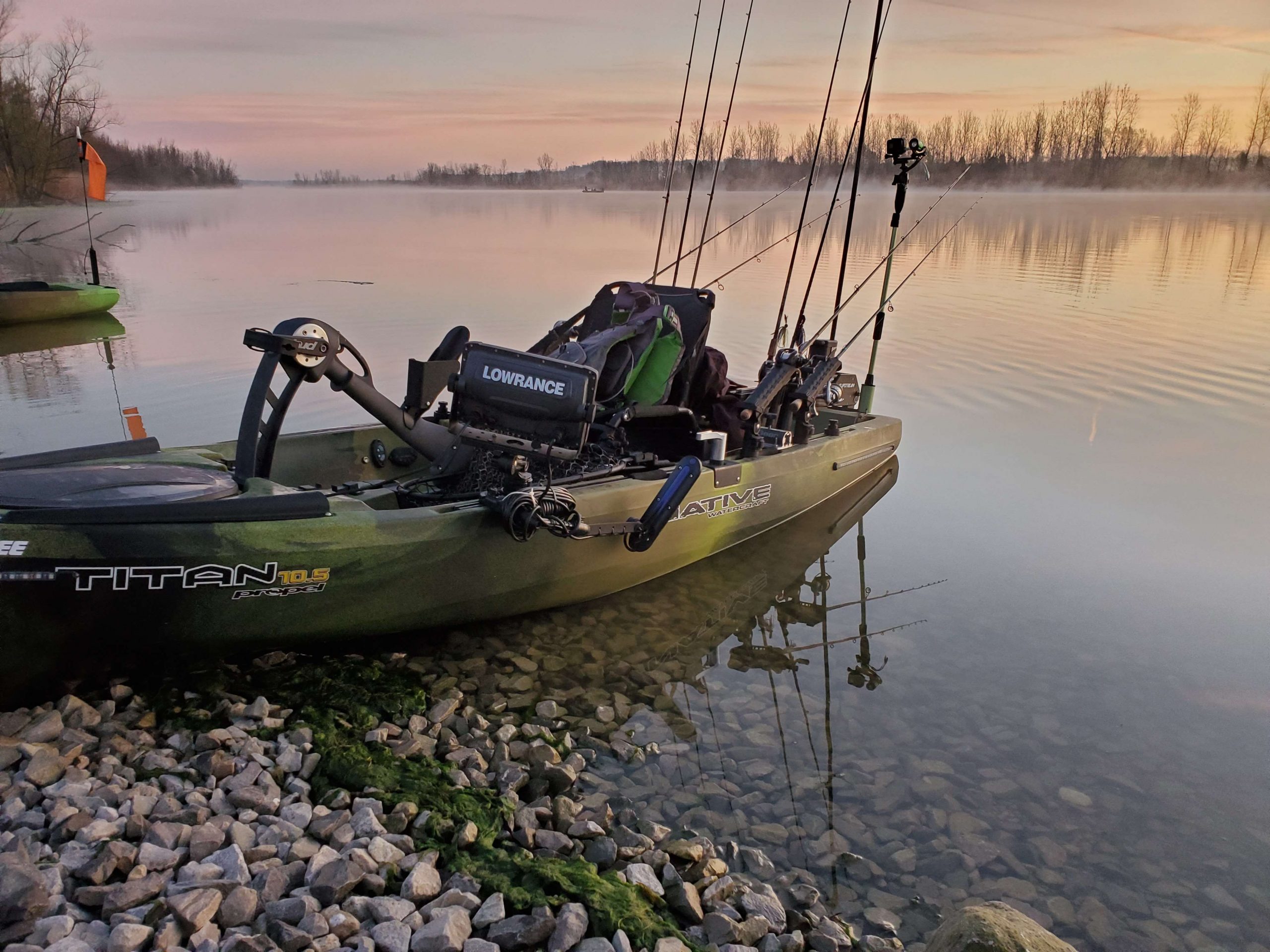
Probably the most common group of questions I get while traveling across the country involve how I have my kayak rigged. Since leaving the bass boat world and pursuing a career in professional bass fishing from a little plastic boat called a kayak, that question will always be dear to my heart, because that’s the first thing I asked as well.
I chose a kayak that best fits my style of fishing, which involves covering a lot of water and being able to stand up without having to worry about balance or instability. Those two factors are precisely why I chose the Native Watercraft Titan 10.5. The Titan is a pedal-drive kayak with a wide 37-inch body that provides an extremely stable platform.
I inadvertently “tested” its stability once while trying to submit a fish in a tournament. I’d caught a 20 1/2-inch largemouth, and while attempting to take its picture on my Ketch board, the bass flopped and went over the side. In a panic, I dropped my phone — luckily inside the kayak — and reached for the fish as it went back into the lake. My own momentum carried me right over the side. About as quickly as I exited the vessel, I was able to pull myself back in directly over the side and the kayak never tipped. Nothing even got wet during the commotion other than myself from taking a swim. That crazy incident sold me on the Titan’s stability.
Rigging a kayak is half the fun of kayak fishing. With so many accessories and options available, you can easily rig your boat to fit your specific needs, desires or style of fishing. Mine is outfitted with Lowrance electronics, plenty of tackle storage, rod holders, even a Power-Pole Micro and powered GoPro mounts for filming my YouTube videos.
In my front hatch is where all the power is located. I power everything with a Dakota Lithium 12V54ah LifePO4 battery. For the size, it’s lightweight and lasts for days powering everything from Sonar/GPS unit, GoPros, Power-Pole to even keeping my phone charged the whole time.
I use a Lowrance Elite 9TI with the Totalscan transducer mounted on the YakAttack switchblade transducer mount. The Switchblade really comes in handy when I’m in extremely shallow water and/or loading and unloading the boat at the ramp. I can simply swing the arm up and out of the way, preventing any damage to the transducer.
The Native Titan utilizes a track-mounting system for many accessories. YakAttack offers a plethora of accessories just for track systems, and my favorite is the Lock-N-Load system. Any accessory can easily be put on or removed when not in use. The base simply slides into the track and is tightened down with a turn of the knob. Then, whether it’s a rod holder, electronics mount or any other accessory, a simple flip of a lever locks it in place for a rock-solid mount. My Lowrance, extra rod holders, and even my Torqueedo throttle all use the Lock-N-Load system.
For tackle storage, I use the YakAttack black pack. This is a durably constructed box that easily holds a variety of tackle such as Plano boxes full of hard baits, soft plastics, extra line, terminal tackle or whatever else I need. It also allows for rod holders to be mounted around the outside, which can be positioned in any orientation you choose.
A Power-Pole Micro and Torqueedo UltraLite 403 finishes out the back of my kayak. Having been accustomed to the handiness of Power-Poles back in my bass boat days, I wasn’t surprised at all with how useful the micro version is for a kayak. It really helps with boat control during windy days, not to mention sight fishing in shallow water.
I can’t say enough about the Torqueedo either. It’s truly been a game changer for me when it comes to covering water by allowing me to go longer distances while assisting my legs at the same time. The idea of making “long runs” in a kayak may sound odd at first, but trust me, it’s not uncommon to cover 10 to 20 miles of water on any given day.
So there you have it. That’s my setup and why I outfit my kayak the way I do. Everything I mentioned here may not be for you, but maybe you’ll find some useful ideas from reading this.
That’s the beauty of kayak bass fishing. Being able to fine tune things to suit your needs and sharing information with the kayak community is what makes this sport so incredible.
